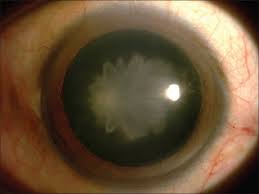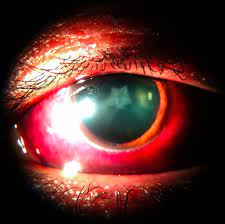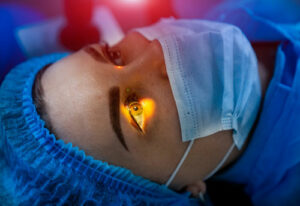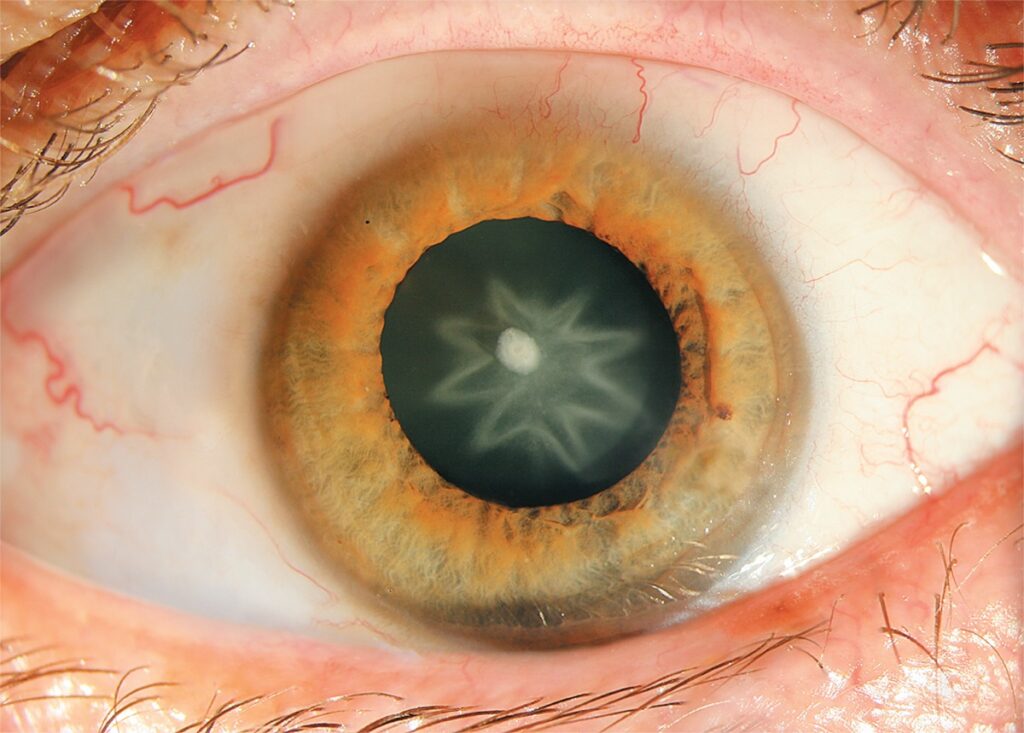Rosette cataracts are a type of salt and water retention eye condition. They’re named after the characteristic rose-shaped pattern that appears on an image of the lens surface. The cause is still unknown, but it seems to be linked to environmental and lifestyle factors, such as smoking, drinking alcohol, and being overweight. As Rosette’s cataracts progress, they can lead to vision loss. In this blog, we’ll explain what Rosette cataract is, how they develop, and what you can do to prevent or reduce their effects.
Contents
What is a Rosette Cataract?

Rosette cataracts are a type of congenital or inherited cataract. They are caused by abnormal development in the lens nucleus, which results in round white circles that form a rosette pattern. Rosette Cataracts can affect both eyes and can range in size from small to large.
The origin of rosette cataracts is unknown, but they are most often seen in younger people who have a family history of the condition.
According to some reports, there are three types of rosette cataracts:
1. Cortical: These are found in the middle layers of the lens and appear as white dots.
2. Subcapsular: These are found at the back of the lens and can cause blurred vision or glare when light passes through it.
3. Nuclear: These are located in the center of the lens nucleus and can cause halos or starbursts around lights when looking directly at them.
Sometimes, rosette cataracts can cause additional vision problems such as myopia or astigmatism.
Signs of Rosette Cataract

There are a few things that you may notice if anyone has developed Rosette Cataracts. Some of these signs are:
Watering in the eyes
One of the most common signs of Rosette Cataracts is people will start to experience a lot of watery eyes. This is because the cataracts are blocking the flow of tears which leads to a build-up of moisture in the eyes. There may also be a decreased sense of vision due to cataracts.
Foggy vision
As cataracts get worse, they may also cause people to experience a lot of foggy vision. This is because the lens of the eye is becoming cloudy which means it’s not able to see as clearly as it used to. This foggy vision also makes it difficult for people to drive or work.
Double vision
Another common sign of Rosette Cataracts is that people may start to experience double vision. This is because the lens of the eye is starting to become cloudy and this can cause two images to merge. This can make it difficult for people to do things such as read or watch TV.
Reduced vision
If cataracts are not treated, they may slowly reduce people’s vision. This can occur in one or both eyes and can make it difficult for people to see things. In some cases, it may also be necessary for people to have surgery to remove cataracts.
Constant headache
One of the most signs of Rosette Cataracts is that people may start to experience a lot of headaches. This is because cataracts are causing pressure on the brain and this can lead to pain. This also makes it a difficult condition to deal with.
The feeling of being tired
Another sign of Rosette Cataracts is that people may start to feel tired. This is because cataracts are making it difficult for the eyes to stay open for a long period. This can lead to people feeling drained and exhausted all the time.
What Causes a Rosette Cataract?
Rosette cataracts are a type of cataract that affects the lens of the eye. These cataracts form in the center of the lens, near the pupil. They can be congenital or caused by injury or other causes.
The rosette form of cataract is caused by a gradual accumulation of thick, dark material on the surface of the lens. This material blocks light from passing through the lens and into your eye. As a result, you may experience decreased vision and visual problems.
Some of the other causes of rosette cataracts are:
Genetics
Sometimes rosette cataracts are passed down through families. Thinning of the lens due to age-related changes can also cause rosette cataracts. These cataracts often form in the later stages of life. Sometimes people are born with rosette cataracts, too.
Injury or trauma to the eye
Accidents like a blow to the eye can cause a rosette cataract to form. Injuries that occur during surgery have also been known to cause it.
Inflammation and infection
Long-term inflammation of the eyes due to infections, autoimmune diseases, and other conditions can lead to rosette cataracts.
Exposure to radiation
Radiation therapy used as a treatment for cancer or other conditions has been associated with an increased risk of developing a rosette cataract.
Disease
Certain diseases like diabetes and autoimmune diseases can increase your risk of developing rosette cataracts. Additionally, certain medications like steroids and anti-inflammatory drugs can also lead to these types of cataracts. Also, nutritional deficiencies like a lack of Vitamin C can increase your risk.
How Is a Rosette Cataract Treated?

If you are experiencing a rosette cataract, your doctor may recommend surgery to remove the cloudy lens. This type of cataract is caused by a gradual accumulation of protein in the lens (a condition called secondary macular degeneration). Surgery removes the cloudy lens and replaces it with an artificial one.
Some of the main treatment options that can be used to address rosette cataracts include:
1. Intraocular Surgery: During this procedure, the surgeon will make a small incision in the eye and remove the cloudy lens. Afterward, an artificial intraocular lens (IOL) is inserted into the eye to replace the original lens. This allows vision to be restored.
2. Laser Therapy: During laser therapy, a focused beam of light is directed onto the cataract to dissolve its proteins so they can be absorbed by the body. This allows clear vision to return without having to undergo surgery.
3. Photodynamic Therapy (PDT): PDT uses medication that causes cells in the cataract to generate light energy which then dissolves the cataract’s proteins.
4. Corticosteroid Injections: These injections can help reduce inflammation and swelling associated with rosette cataracts, but they are not usually a permanent solution. These injections may need to be repeated to maintain the results.
When treating rosette cataracts, it is important to seek medical advice from an experienced eye specialist who can diagnose and recommend the best course of treatment. Depending on the severity of your condition, you may need more than one type of treatment to restore clear vision. While surgery is often necessary to remove clouded lenses, there are other treatments available that may help relieve symptoms and improve vision in some cases.
What Are The Impacts of Having a Rosette Cataract?
The impacts of having a rosette cataract can vary depending on the severity of the condition. Generally, rosette cataracts can lead to decreased vision and increased glare. In more severe cases, the cataract may completely block the eye’s lens, causing blindness.
Some of the other impacts of having a rosette cataract can include:
Eye Conditions
Some people with rosette cataracts may develop other eye issues, such as macular degeneration or glaucoma. In addition, patients may experience increased floaters in their vision and an overall decrease in the clarity of their vision.
Social Impacts
People with rosette cataracts may also face social impacts due to their decreased vision. This could include difficulty driving, reading small text, and engaging in activities that require clear vision. These also could have a significant impact on the person’s quality of life.
Concentration Issues
Some people with rosette cataracts may also suffer from concentration issues. This is because the decreased vision can make it difficult to focus on tasks, leading to difficulty completing daily activities or concentrating on school or work.
Constant Eye Strain
The decreased vision associated with rosette cataracts may also lead to constant eye strain. This can cause fatigue, headaches, and other physical complications.
How To Prevent Rosette Cataract?

If you are experiencing any of the following signs and symptoms, it is important to consult a doctor as soon as possible: a sudden vision change, seeing halos around bright objects, decreased clarity of vision, and eye pain. If Rosette’s cataracts are not treated, they can worsen over time, leading to loss of vision. Here are some ways to help prevent this type of cataract:
Wear Sunglasses When You Can: Sun exposure can cause your eyes to produce more free radicals. These free radicals can damage the cells in your eyes, including those that make up the lens. When you have Rosette cataracts, the lens may become cloudy and discolored from the accumulation of these damaging agents. To protect your vision, wear sunglasses whenever you’re outside in direct sunlight.
Limit Your Exposure to Too Much Sugar and Fat: Studies have shown that both sugar and fat can promote the formation of rosette cataracts in your eyes. Although it’s not clear why this is the case, limiting your intake of either sugar or fat should help keep your lenses healthy and help prevent Rosette cataracts from forming.
Get Enough Rest: Many people neglect to get enough sleep because they think it won’t make a difference. However, getting enough sleep helps keep your body and brain functioning at their best — which can also help protect your eye health by reducing inflammation and fatigue. Additionally, getting enough rest helps your eyes to regenerate and repairs damaged cells.
Keep Your Eyes Clean: Dirty eyes can cause irritation and cataracts. Make sure to clean your eyes with a mild eye cleanser twice a day, using a cotton ball or dry cloth. Also, avoid using harsh eye makeup or hair products that can contain chemicals that can damage your eyes.
Try a Drug Called Essilor: Essilor is a drug that can help prevent Rosette cataracts from forming. Essilor is available as drops or injections and is usually prescribed to people who have advanced age or serious eye diseases.
Conclusion
Rosette cataract is a type of congenital cataract that affects the vision of infants and young children. It can be treated both surgically, to remove the opaque lens material, and medically, with eye drops or patches. In severe cases, glasses or contact lenses may be needed to improve visual acuity. Regular check-ups and follow-up care are essential for those affected by rosette cataracts to ensure proper diagnosis and treatment.
Early diagnosis and treatment of this condition are important to prevent any lasting effects on the patient’s vision in adulthood. By working closely with an ophthalmologist, parents can help their child achieve the optimal vision for years to come.
Cataract surgery is a safe and painless procedure. At MantraCare we have a team of experienced eye surgeons, who will be happy to answer any questions on cataract surgery. Call us at +91-9711116605 for any inquiries.
